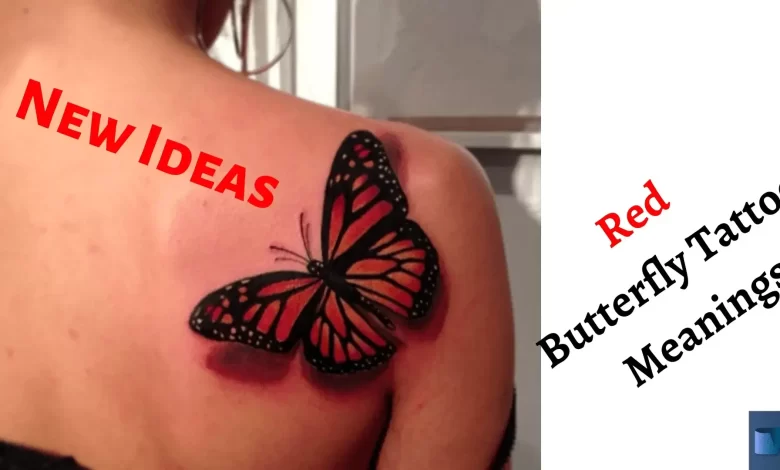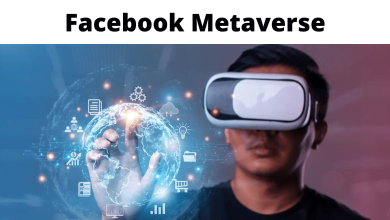
Butterfly tattoos are really common these days but are these just tattoos or is there any hidden meaning behind them?
You will be astonished to know the meanings we are going to discuss about the Red Butterfly Tattoo Meanings.
Tattoos surely have some meaning associated with them and this phenomenon finds its roots from ancient antiquity.
The Red Butterfly Tattoo Meaning is not known to every person because they are very rare however, these tattoos are getting common.
But what does red butterfly tattoo mean?
Red is a color of both Love and Hate.
In this way, a number of Red Butterfly Tattoo Meanings could be taken.
One could be the symbolic representation of love and affection towards some other person.
Second could be hate or jealousy against someone or something.
Red is also a sign to stop that may be taken as stillness in the life of the person weaning it.
Here, top red butterfly tattoo meanings have been explored.
Beautiful Butterfly Tattoo Meanings: Holistic Symbolism
Red Butterfly Tattoo behind the Ear

Ears are the organs of hearing and receptivity that develops the sense of hearing.
A red butterfly tattoo behind the ears could represent the shyness or self esteem.
The major relation of these tattoo is with your emotions and color of the tattoo defines the emotional bend.
In case of red butterfly tattoo meaning, these are the high exreme emotions like intense love, hatred or passion for something.
It also symbolizes that the butterfly carries the word of God to you just like the angels.
It could also mean your faith guiding you to your destination of this world or the afterlife.
Red Butterfly Tattoo on Neck

Neck is an important part of your body as it connects your body with the head contain your four basic senses and the CPU i.e. Brain
A Red Butterfly Tattoo on the neck could be highly significant specially on the throat as everything going into your body naturally is through it.
It serves as a connection for the communication between the outer world and the inside of your body.
On one side, neck tattoos are also painful so it could also be a symbol of bravery, courage and strong nature.
As the red color is a sign of blood that relates to energy and youth.
Red Butterfly Tattoo could also be a sign of the extrovert personality of the person.
He is open to the people and is not afraid of gatherings and can manage his affairs with other persons very generously.
Neck tattoos are mostly common among the dangerous people who do not want anyone to mess with them.
But in case of red butterfly tattoo the meaning is exactly opposite as the person with it wants other people to stay in connect with them.
Moreover, this tattoo serves the purpose of a beautiful tattoo to make your body more attractive.
What is the Pandora’s Box? (A Guide to Greek Myth of Pandora)
Red Butterfly Tattoo on Hand

Any tattoo on the hand is a one that you wants everyone to look on because it is seen by people many often.
Your tattoo will be visible to almost everyone you are seeing.
And Red Butterfly tattoo serves as a very beautiful tattoo to show everyone.
Hand tattoos are also one of the most common and most visible tattoo that are found in the tattoo world.
Red Butterfly tattoo on hand shows that you are dominating and can control the moving creatures.
As butterflies are one of the most stirring creatures that moves from one flower to another,
So, having a butterfly stationed on your hand signifies that you have the ability to control things.
On the other hand, it also shows that you are so attractive that anything fallen on you can not leave you.
Small Red Butterfly Tattoo

Small does not mean insignificant or unimportant as the most loving things are always given in small quantity.
But small do means precious because everything that is limited in the world is precious.
While talking about the small red butterfly tattoo, it is always a cute tattoo and a perfect selection for the females.
Butterflies are sensitive creatures just like females and that tattoo makes them even cuter.
Small butterflies are also a symbol of infancy which brings in innocence.
So, it is also a sign of innocence of the bearer towards this materialistic world.
Mostly, these tattoos are related to the family as it was in the ancient times that people used to have tattoos to represent their affiliation towards a group.
Here are 9 Thrilling Zeus Tattoo Meanings (Greek Mythology)
Wrist Red Butterfly Tattoo

Wrist Tattoos are a new fashion and are in trending these days.
This part of your body is most probably associated with guidance and acquaintance.
The meaning of Wrist Red Butterfly Tattoo is also associated with guidance.
The Butterfly imprinted in the form of tattoo is believed to guide the bearer to the right path.
If you are looking for a simple and modest tattoo then this wrist butterfly tattoo is a best chice for you.
As this tattoo is for both genders and equally beautify men as well as women.
Red Butterfly Tattoo on Arm

Red Butterfly tattoo on arm is a clear depiction of the loss of something or someone.
Even the sacrifice of a person could be clearly portrayed with the help of an arm tattoo.
In case of Red Butterfly Tattoo on Arm, the sacrifice is surely of some beautiful thing.
The thing you did not want to lose and wanted to keep with you forever and that is the reason why you got it tattooed on your arm.
Red color is already a sign of tense emotions and that means your love for the sacrifice was really deep and pure.
Red Butterfly Tattoo on Back

Tattoos on back are not the tattoos that a person wants to show everyone.
While butterfly tattoo on a woman’s back is considered very erotic and passionate.
Specially on the lower back where it becomes more sexy for the viewer.
Wearing a backless top may let this tattoo to be visible to everyone but mostly it is some sort of private tattoos.
That are just there for a special kind of person not everyone.
On the other side, red butterfly tattoo on back is a sign that the individual is very much passionate about his/her lover.
That is why, that person bore the pain of having a tattoo on its back.
But some may get it for aesthetics, as back is already an sensual body part and adding a tattoo makes it even sexier.
Red Butterfly Tattoo on Thigh

Thigh tattoos are very much rare and are not seen very often.
This tattoo is only suggested for those who are really passionate about tattoos.
However, red butterfly tattoo on thigh represent feminism and women power because this part often symbolize female sexual power.
Butterfly Tattoo on Shoulder in Red

Having a tattoo on shoulder is an old tradition and was very common among the sailors and boys inspired from the sailors.
A Red Butterfly Tattoo on shoulder represent courage and strength as the strong sailors were the ones who inked these tattoos on their shoulders on the base of their achievements.
Whenever a sailor got a victory over something big like killing a huge shark, he gets that tattooed on his shoulder to represent his power and strength.
Chest Red Butterfly Tattoo

A Tattoo on chest is also a masculine tattoo and is a sign of male boldness present in that man.
A red butterfly tattoo on chest also a sign of the ability of that person to move forward and face the difficulties with bravery and passion.
So, for the display of a man’s inner power, he gets this tattoo on his chest.
Does Evil Eye Protection Tattoo Mean it? (Scientific Basis)
Conclusion
Butterfly tattoos are in trend these days but it is difficult to decide where and how should you get these.
These are various designs that can give you a lot of ideas for having a good aesthetic tattoo.
In this regard, we have also added the respective meanings associated with certain tattoos.
This is because you are going to get it printed on your body permanently and that is why you must give it a thought before getting it.
However, thinking too much also eliminate the spice that is present in in these aesthetic red butterfly tattoos.
So, just take the call of your heart and go for it.
Plus do not forget to mention in the comments which tattoo design inspired you the most.
THANK YOU!



